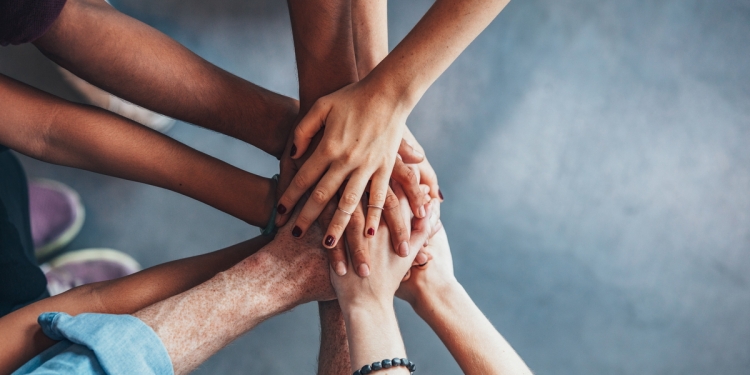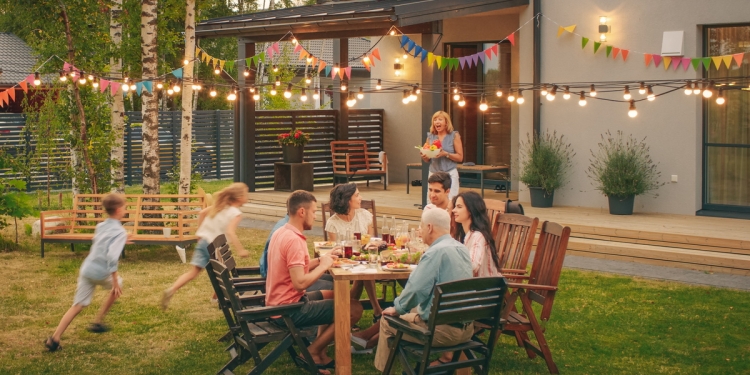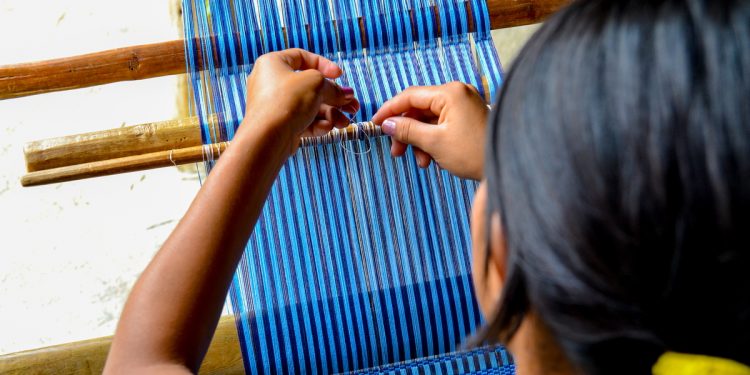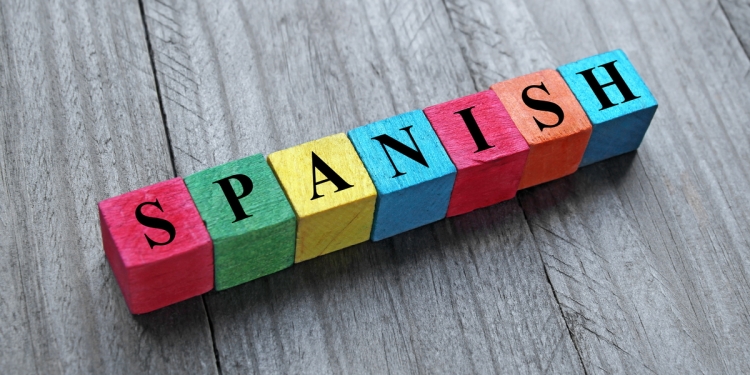As you settle into your life in Mexico, you’ll begin to encounter distinct social graces and rules of social etiquette.
Learning about and respecting local customs and social practices is an integral part of assimilating a new lifestyle in a country that is foreign to your home culture.
This guide helps you to navigate Mexico’s contemporary social etiquette and get acquainted with the social graces practiced here. It can also help to prevent you from making embarrassing or unnecessary faux pas.
Becoming familiar with Mexican social etiquette
This guide provides you with a detailed primer about Mexican social etiquette in everyday situations to help you learn about and adapt to local customs. This guide shares valuable insights if you plan to move to Mexico to live, work or retire.
If you plan to work in Mexico, whether you’re living here or visiting Mexico on a business trip, this guide in combination with our Guide to Business Etiquette in Mexico will help you to prepare for your meetings and negotiations.
Social graces and language
Mexico has very polite and courteous mannerisms built-in to its social norms and language. Politeness, patience, and tolerance in all situations —especially in difficult or frustrated ones— is always appreciated, and ultimately rewarded in Mexico.
Conversely, a display of impatience, anger, frustration, or lack of general respect in formal or informal situations can tend to fall on ‘deaf ears’ when dealing with most people in Mexico.
Although those around you may not outwardly react to your conflictive behavior, the ultimate outcome in a situation could be made worse for you through deliberate obstruction or total rejection of your wishes, not because it is impossible to fulfill them, but as a response to what is deemed to be your impoliteness.
Language formalities in Mexico
Politeness is built-in to social graces of Mexican culture, and this is most apparent in use of Spanish language.
- It’s common to use the Spanish language in its formal context —Usted— when dealing with people you do not know or who are senior to you.
- For friends, close associates, and informal situations, the informal —Tú— form of language is usually more appropriate.
- The use of formal language in informal situations in Mexico is often employed as a means to express irony, for example.
To better understand, and ultimately assimilate elements of Mexican social culture, you’ll need a good working knowledge of Spanish and spend time absorbing the nuances of how Mexican Spanish is employed everyday situations.
If your Spanish is rusty (or you’re monolingual), a language course can help.
When you have at least a basic working knowledge of Spanish, Mexperience’s PinPoint Spanish series helps you understand the nuances of how language is used in Mexico.
See also:
Learn about Spanish Language in Mexico
Learn about its nuances with the PinPoint Spanish Series
The etiquette of meeting & greeting people in Mexico
Meeting & greeting formalities are important in Mexico. Following social protocols will demonstrate your interest and sincerity, whereas ignoring them may be interpreted by others as coldness, or outright impoliteness.
Physical contact is an essential part of meeting & greeting
Whereas in the US and some places in Europe people who don’t know each other and especially people meeting for business will happily gather and just say “hello, nice to meet you,” in Mexico, the correct level physical contact is essential to cultivate trust and earn respect.
Personal space
Mexicans tend to stand closer to each other than people do in the USA and Europe. This might feel a bit awkward to you at first if you are commonly used to having two feet or more of ‘air’ between you and other people (and especially those of the same gender as you), but in Mexico it’s quite common for people to stand and converse more closely than that with each other. You don’t want to get too close, but stepping back too far may be taken as a sign of mistrust.
Men meeting & greeting other men
Men always shake hands when they meet and before they depart each other’s company.
Furthermore, an abrazo (hug) is shared between friends and may also be shared business associates with an established and productive working relationship. If you are unsure about whether to hug, allow the other person to lead: if, while shaking hands, he pulls you in toward him, follow through with your left arm on lightly his back—and give him 2 or 3 pats on the back.
Men meeting & greeting other women
It’s appropriate and courteous for a man to bow slightly when meeting a woman, regardless of familiarity, and whether the situation is a social or business occasion.
In business situations where familiarity is not yet established, men will politely shake women’s hands when they meet, and before they depart. It is less usual for women to expect a kiss on the cheek, and most women will simply offer a handshake.
In social situations, and in business situations where a working relationship has been established, women might learn toward you to kiss when they are shaking your hand and if they do, you should follow through with a light kiss on the cheek—and only one kiss.
In regard to hugging, an abrazo (hug) is shared between friends and may also be shared between business associates with an established and productive relationship—hugs are light, and brief. In business settings, men ought to allow the woman to lead in this matter.
Women meeting & greeting other women
In situations where women already know each other, women will always hug and kiss each other on the cheek.
When women are being introduced for the first time, whether socially or in a business context, a light handshake is a minimum gesture, and it’s also more common for women to share a light kiss and/or a light hug on a first meeting, but not always—wait for your host to lead if you’re unsure.
When departing, a handshake is a minimum gesture in a business context, and in social situations, and where business familiarity is well established, it is quite likely that women will kiss on the cheek and hug before they depart.
A note about the need to greet people individually
When meeting a small group of people, it’s polite to greet each person individually and not simply say “hello” to everyone as group as is common in Anglo culture. See the section earlier in this guide for more insights about greeting protocols.
Before you part company
It’s important to say good-bye to people properly in Mexico. Leaving a meeting or situation without saying good-bye may be construed as poor form, impoliteness, or coldness on your part.
It’s not appropriate to simply say good-bye from a distance after you have been meeting somewhere together; there should be some physical contact, for example shaking of hands or hugs. See the section earlier in this guide for more insights about greeting protocols.
The use of professional titles in Mexico
Professional titles are an important part social and language etiquette in Mexico —they can be significant status symbol in some professional circles— and even in some informal situations.
Professionals with a degree are not referred to as Señor or Señora or Señorita in professional (and some social) situations, but instead by their professional title.
A note about people’s names in Mexico
In Mexico, people use three names: their First name, their Paternal name, and their Maternal name.
In social situations they will typically use their First name.
In formal situations and for business: when written, they will often use all three names, and the third name is often be abbreviated with the first letter (e.g. on business cards or email signatures); when speaking, they will typically use their first two names.
If they have a professional title, this will usually be present on formal and business correspondence; some people might introduce themselves verbally using their professional title as well.
The most common professional titles in Mexico
When someone is using their professional title, they will be addressed as [Title] First name and Last Name, for example, La Licenciada Mariana Sanchez.
Here are the most common titles you will encounter in Mexico:
Licenciado/a — This is the most common and used to address anyone with a professional degree. Often used for addressing lawyers and Notary Publics, and any senior office worker, senior manager, or official.
Ingeniero/a — This refers to an engineer, and may be used when talking formally to anyone working in an engineering environment, and examples include: building and construction (but see Arquitecto, below), senior staff or managers working in manufacturing or design, and experts in information technology.
Doctor/a — Anyone who has earned a Doctorate in their discipline may refer to, or present, themselves as Doctor/a; it’s most commonly used to address professionals working in medical and pharmaceutical fields.
Arquitecto/a — This title is specifically reserved for those with a professional degree in architecture.
Maestro/a — This term is versatile, and can be used to describe a teacher, a master crafts person, someone who is adroit in the fine arts, and also an experienced or highly skilled builder or trades person, including a plumber, for example. Read this article for further insights.
Professor/a — This term is used almost exclusively in academia, or to address an academic professor who happens to be working in an industrial or office environment.
When to use professional titles
Although professional titles remain an important and an integral part of social etiquette and language use in Mexico, it’s also reasonable to acknowledge that they are not as important as they have been in previous eras—especially among younger generations.
However, keep these points in mind:
- In the context of formal situations and/or situations of (legal) dispute or argument between parties, professional titles will often not only be employed, but emphasized, and this is part of the formality in those types of circumstances.
- When you are being introduced to someone by somebody else, the person making the introduction might refer to the third person by their professional title and in this case, follow the example and refer to the person by their title.
- If the person you are meeting immediately refers to themselves using their professional title, take that as a cue to know that the conversation will be formal, even if the situation may be a social or informal one.
- You might at some point during the course of a conversation be invited to use perhaps a first name—but the other party must lead this; never assume familiarity.
Dining etiquette in Mexico
Whether you’re dining our formally or informally with others in Mexico, there are certain rules of etiquette to consider as part of the gathering. Here are some local insights about the etiquette of eating out and dining socially here.
Invitations and bill settlement protocols
Regardless of whether the meal is informal, formal, or to discuss (potential) business matters, there are a few graces to consider about invitations and bill settlement.
- If you invite someone to eat out at a restaurant, it is presumed (and expected) that you will settle the bill, including the tip.
- If you are invited out to eat at a restaurant, it is also presumed that your host will settle, and polite to let them do so.
- It is customary for those who have been invited out to eat at a restaurant to offer to pay but this is a social grace, and one that should always be kindly and politely declined.
- If you are invited out to a restaurant for a meal you, too, should offer to pay, and then gracefully accept when your kind offer is politely declined.
- Splitting the bill is not typically practiced in Mexico, except in the case of close friends, or family. (Note: Restaurants will take split payment from patrons if asked to do so.)
Formats for breakfast, lunch or dinner, and supper
The format and length of meals out can vary and is most usually aligned with the time of day, type of meal, and the occasion.
Social breakfasts may last for thirty minutes if the parties have a bust day ahead of them, or for two or more hours, depending on the situation.
Lunch or dinner is the main meal of the day in Mexico, and typically starts between 2 p.m. and 4 p.m. You should always plan to spend at least two hours for this meal. It’s impolite to rush off immediately afterwards, unless there’s a prior understanding that you or the other party has commitments to attend.
Dinners and suppers in Mexico tend to be ‘friends and family’ affairs; supper is taken from any time after 8 p.m. and can start as late as 10 p.m. Business dinners and suppers are uncommon except between close business associates.
Being invited to dinner to a person’s own home is quite an honor, especially if the relationship is relatively new, or you have recently been cultivating a working or business relationship. You may take wine and/or flowers if you have been invited to dinner at someone’s home. If you only take one item, we recommend you take flowers. See gift-giving, later in this guide, for more insights.
Some observations on table etiquette
Here are some notes and tips in relation to table etiquette when you are dining in Mexico, whether at a restaurant or at someone’s home:
- If you are at a restaurant and dining formally, it’s customary to allow your host to order for you. If you are the host, it’s customary to ascertain your guest’s choices and order accordingly on their behalf.
- If you are dining informally, it’s more common for each person to order their own food directly with the waiter.
- If you don’t read/speak Spanish, some restaurants may have a menu in English, or the menu might be bilingual. If you’re the host, ensure that someone is at the table who can translate if your Spanish is not good; if you are the guest and there’s only a menu in Spanish, ask the host for guidance.
- Excess drinking is frowned upon in polite company Mexico; always regulate your alcohol intake when taking meals out on social or business occasions.
- It is local customary to offer toasts; the traditional toast in Mexico is “¡Salud!” (health).
- It is customary for the host to say “buen provecho,” or perhaps just “provecho” before commencing a meal; and might be combined with a toast of ¡Salud! The word provecho is the linguistic equivalent of the French, “bon apetit.“
- Some foods, like tacos, tortas and tostadas are eaten using your fingers; using a knife and fork may be impractical and even look comical; if in doubt, follow the lead of your host(s).
Tipping etiquette at restaurants in Mexico
Mexico has a strong tipping culture and, if you are settling the bill, you must include a tip (unless the service was poor, that is unlikely).
- 10% to 15% of the total bill is customary, depending on the class of establishment and level of service you received.
- At Mexican diners and fondas and non-fancy restaurants 10% is sufficient; at higher-end restaurants and bistros, 15% is expected for good service.
- The 18%-25% rates now often expected at high-end restaurants in the United States are not practiced in Mexico; 15% is considered quite acceptable.
See also:
On Mexican meals and mealtimes
¿Qué término? (Cooked meat)
Mole and other things you haven’t tried
Learn more about Mexico’s tipping culture
Time and punctuality in Mexico
The English are so well known for their punctuality that, in Mexico, there’s a phrase people might use immediately after agreeing a time with you, “hora inglesa,” literally translated means “English time.” The inference is that the time agreed should be strictly adhered to.
For social events, you could arrive 30 minutes later than the time on the formal invitation, or communicated by the host in some other way. In many countries, people rarely show up for informal parties at the exact time, preferring to arrive a little later on, and in Mexico this is quite common.
If you are sending out invitations to host a social gathering, whether its formal or informal, keep in mind that most guests are unlikely show up at the precise time you set on the invitation.
Importantly, it is not customary to define an ‘end time’ for social occasions in Mexico. Sometimes invitations to very formal events might specify a time at which the event will end, but in Mexico the end-time on your invitations ought be left open-ended, and no end time should be specified on the invitation.
Dress code in Mexico
How people dress is another important aspect of Mexican social culture. Here are some insights about attire depending on the climate and social or business situation.
Attire is influenced by climate in Mexico
The dress code in Mexico is in good part influenced by the local climate. Suits and heavy dresses in hot climates may not commonly be worn even for some formal situations (check locally) in which case smart-casual clothes which are light, comfortable, and elegant is often worn in more formal situations in hotter climate zones, whereas heavier formal attire (or heavier smart casual clothing) is often used in temperate and cooler climates.
Formal meetings in temperate climate zones
For formal occasions in temperate climates —including business meetings, weddings and funerals, and other somber or serious occasions— men should always wear a suit and tie and women a formal dress. During colder months, overcoats and scarves may be worn, and it’s prudent to carry an umbrella during the rain season.
Formal meetings in hot climate zones
Except for very formal situations (and at venues where the building is air conditioned), attire for most formal meetings in hot climates is characterized by light and elegant clothing. Heavy suits and dresses are simply impractical in hot, humid, environments. When dressing formally in a hot climate pay special attention to footwear; overall, “simple elegance” is what is called for.
Informal gatherings
For informal occasions, smart-casual or informal attire may be appropriate depending on the venue and situation.
For casual social gatherings, people’s attire tends to match the local climate: lighter for hotter climates, heavier smart-casual clothes for temperature and cool climates. Beach shorts and T-shirts are commonly worn at informal gathering with friends coastal locations and in other hot climates; however, if you are meeting informally at a party where you don’t know that many people, something closer to smart-casual might be a better choice, absent a theme, e.g. pool or beach party.
During more formal or special occasions, for example birthdays and anniversaries, people will tend to dress-up. Older men might wear a coat or suit (with or without a necktie) whereas younger men and boys tend to sport smart casual attire. Older women will typically wear a formal dress (lighter materials in hot climates) and younger women and girls will wear smart-casual dresses.
Wedding attire in hot climates
Heavy suits are impractical in hot climates (e.g. Mérida in the summer or along the coasts) and so wedding attire might be less formal in hotter places, depending on the venue. Some weddings have “themes” in which case you ought to attend in attire to match. Check with the wedding hosts (or wedding planner if there is one).
Meeting for the first time
If you are meeting people for the first time, it’s better to dress conservatively, especially if the meeting is for business or some other (potential) formal working association.
Attire ought to match the climate (see above), with an emphasis on simple elegance and attention to appropriate footwear. Neutral colors including white (ideal for hot climates), navy, black or gray (better in temperature climates); or conservatively bright spring colors are ideal.
Dressing for the season
As we have mentioned in a related article, there are places in Mexico that can get cool or cold during the fall and winter months, so check the local climate where you are meeting.
Layers of clothing are often practical during the fall and winter, as mornings and evening tends to be cool or cold, especially in places situated at elevation, but daytime temperatures can get quire warm. Cold fronts during the fall and winter months may require an overcoat as well.
Torrential afternoon rainstorms can be common during the rainy season, and it’s prudent to take an umbrella or a light raincoat if you might be outdoors or otherwise exposed to the elements.
The dry season, especially between February and May, can get very hot and dusty in some places, so dress accordingly: light clothing (elegant for formal occasions), long sleeve shirts and a hat to protect from unbroken sunshine if you’re likely to be outside for extended period, e.g. a garden party.
You can learn more about Mexico’s Seasons here on Mexperience
Gift-giving etiquette in Mexico
Gift-giving is a significant aspect of Mexican social culture. Gifts are seen as symbols of affection and appreciation, and the absence of a gift on some occasions might be construed as impolite, or a form of “cold shoulder.”
Note that if you receive a gift, it is customary to open the gift immediately to show interest and appreciation for it.
Here are some tips about gift-giving practices in Mexico.
Lunch and dinner invitations
Although gifts are not required if you are invited to a lunch or dinner meal, they are appreciated.
A gift should always be offered if you are invited to someone’s home for lunch or dinner. Fresh flowers are always appreciated. A bottle of wine (if your host drinks alcohol), or a small gift from your home country if you are visiting from abroad are also good gifts to take to a dinner party.
Gifts for personal assistants
Secretaries and executive assistants appreciate gifts in return for their assistance; for example, when a friend’s assistant helps you arrange some travel plans. These gifts ought to be a token of appreciation (not a statement), and if you are male and the assistant is female, you ought to indicate that the gift is from you and your spouse/partner if you have one.
Gifts at birthdays
Birthday gift-giving is popular and frequently practiced in Mexico, especially among close friends and family members. Sometimes the gift might be a meal out at a fashionable or fancy restaurant.
If you’re living in Mexico with a young family, you’re likely to be invited to your children’s friends’ birthday parties. It’s appropriate to take a gift for the child being celebrated.
Gifts given at Christmastime
Christmas gift-giving is practiced in Mexico, usually on Christmas Eve, although children might also receive (additional) gifts on January 6th, Kings’ Day.
If you don’t know what to give
If you’re unsure about what to give, inquiring about what kind of gift would like to be received may be considered discourteous, so avoid asking the person you intend to give something to what they would like.
If you know someone well who is close to the person you want to give to, you might ask them privately for guidance.
If you are visiting (or returning to) Mexico from abroad, you might bring something that is directly associated with your home country as a gift.
Popular gifts to consider giving
Here is a list of items that people often give in Mexico as an expression of appreciation and/or for special occasions.
- Fresh flowers, a mix of colors is ideal.
- A fine plant in an attractive plant pot, especially if your hosts are keen gardeners or you know they have an attractive terrace/garden at their home.
- Fine confectionery.
- Unique or interesting gifts from (and made in) your home country.
- Finely made artisan pieces. These can be purchased abroad or in Mexico, but must be genuine, not mass produced.
- Tasteful, hand-sized pieces of framed artwork.
- Books with fine photographic or artistic content, or a book on a subject or by an author you know the person receiving it will enjoy.
- Good quality wine, or a bottle of fine liquor (but check that your host drinks alcohol).
Types of gift to avoid giving
Certain types of gifts are best avoided; here are some tips:
- Don’t give gifts associated with tourism—for example, don’t buy an item sold at Mexican airport aimed at tourists to give to your host or business contact or associate.
- Avoid gifts that are associated with any religious or political matters.
- It’s inappropriate to give gifts from your home country that are neither associated with the country and/or not made there, unless your host asks you for something specific to be brought from there to Mexico.
- Expensive or elegant gifts ought to be given only on special occasions and to people you know well.
- Gifts made of silver are acceptable if they are genuine silver art pieces that were crafted in Mexico.
- Avoid giving alcohol unless you know the person’s drinking preferences.
Mexico’s geography
Mexico is on the North American continent and ought not be referred to in conversations as being part of “South America” or “Central America.” Mexico can correctly be referred to as being part of Latin America.
Learn the language and speak in Spanish
If you intend to live in Mexico, full-time or part-time, You ought make a genuine attempt to speak some Spanish. Making an effort to speak Spanish, even at a basic conversational level, will be greeted with warmth and considered a gesture of respect and goodwill.
The Mexican flag
The Mexican flag is an important emotional and political national symbol and should never (under any circumstances) be exhibited, used, or referred to in mock, mimicry, or defamatory terms.
Walking past or between people, and leaving
When walking past someone who has yielded to you, or past people who are in conversation with each other (e.g., to excuse your passing between them); and when exiting an elevator, or leaving an office or a room when others will remain present, it is customary to say “con permiso” (or more simply, “permiso“). When someone else says (con) permiso, in these situations, it is customary to reply with the phrase “propio.”
Etiquette when visiting Mexico’s churches
Whether you are visiting a church as part of a leisure tour, attending mass, or some other formal event there, for example a wedding or funeral, you ought to observe certain rules of etiquette when entering the church.
- Be respectful in your attire: shorts, beachwear, cut-off tops, and other very casual clothing should not be worn inside the church.
- Men must always remove hats (including baseball caps), scarves and gloves. Women may wear a head covering —that can include a hat/scarf, but not a baseball cap— and may be encouraged or expected to do so in some of the more traditional Catholic churches.
- Churches are a place of worship: be mindful of any religious services taking place and don’t interrupt the services.
- Do not use flash photography. In some smaller communities, for example, rural Chiapas, photograph in and even around the church is strictly forbidden.
See also: Photography etiquette. - It’s respectful to leave a donation (the donation box is typically near the main entrance/exit) to help with church expenses, whether you are touring or visiting for a specific event. If you attend mass, the alms basket may be passed around and it’s appropriate to contribute. Take cash with you.
Beware of hands on hips, and in pockets
Putting your hands on your hips is a sign of aggression in Mexico; and placing your hands inside your pockets when in conversation with someone, as in many countries, is regarded as bad manners.
Further research and resources
Mexperience offers you a comprehensive online resource of information and local knowledge to help you discover Mexico, explore choices, find opportunities and plan a new life in Mexico.
- Making friends and cultivating social networks
- Adapting and settling-in to your lifestyle in Mexico
- Finding balance and purpose in your Mexico lifestyle
- Articles about lifestyle planning in Mexico
- Articles about Mexican culture
- Articles about local customs
- Essential skills for expats series
Mexico in your inbox
Our free newsletter about Mexico brings you a monthly round-up of recently published stories and opportunities, as well as gems from our archives.











